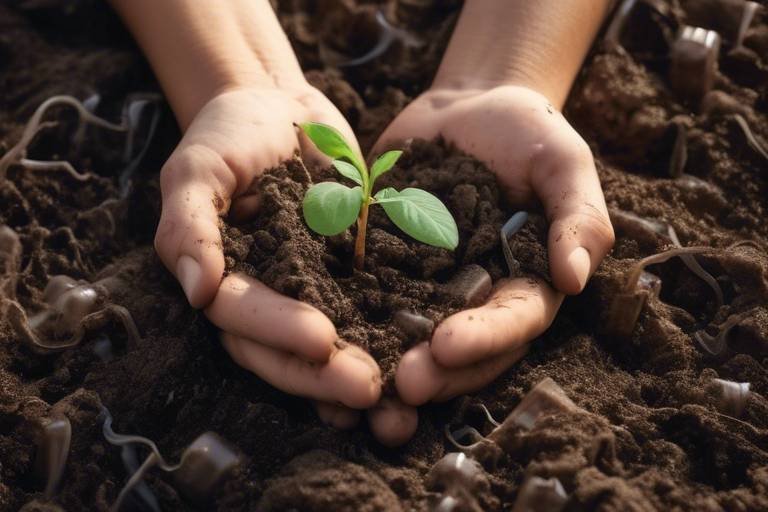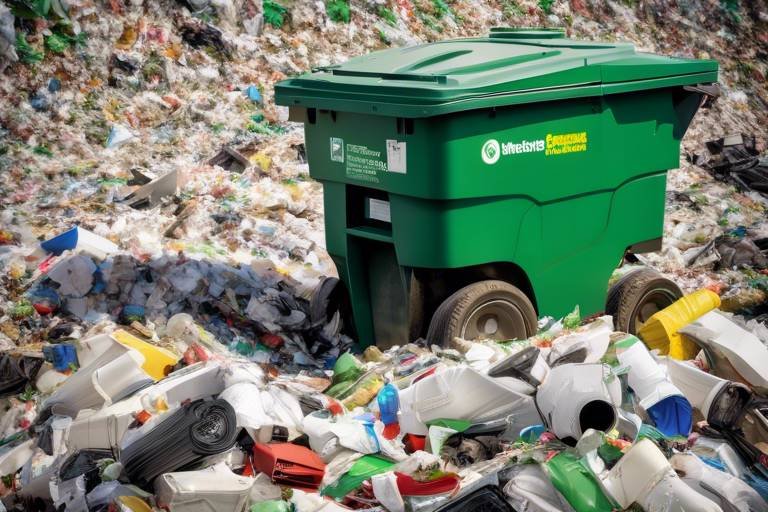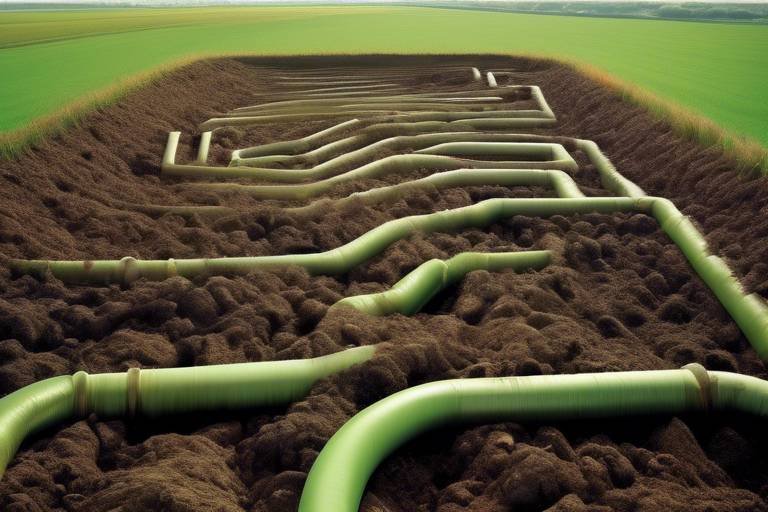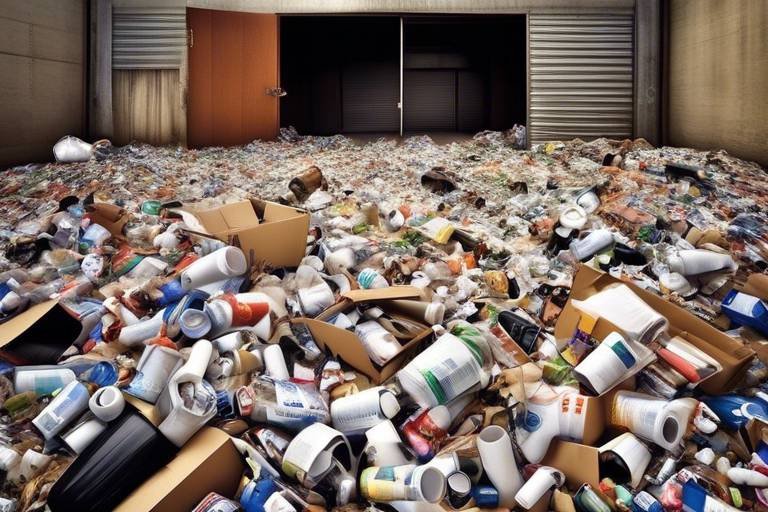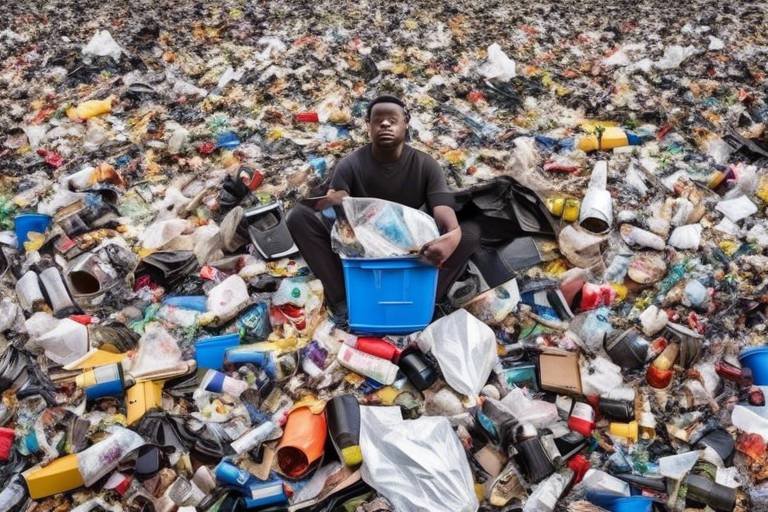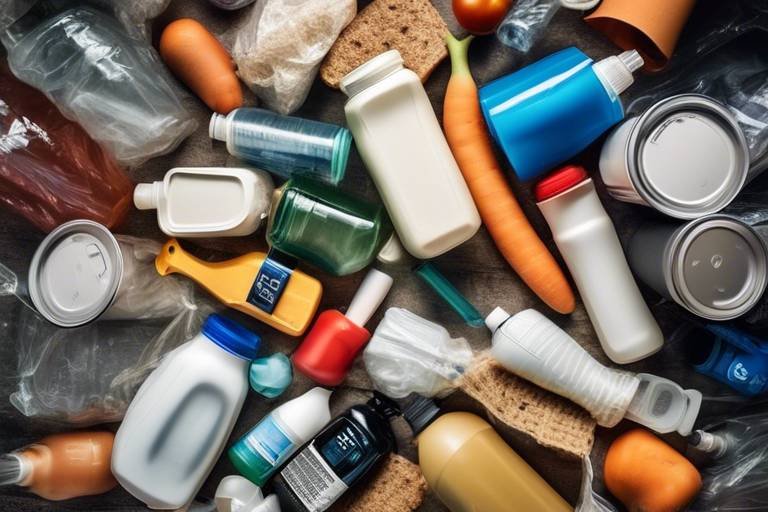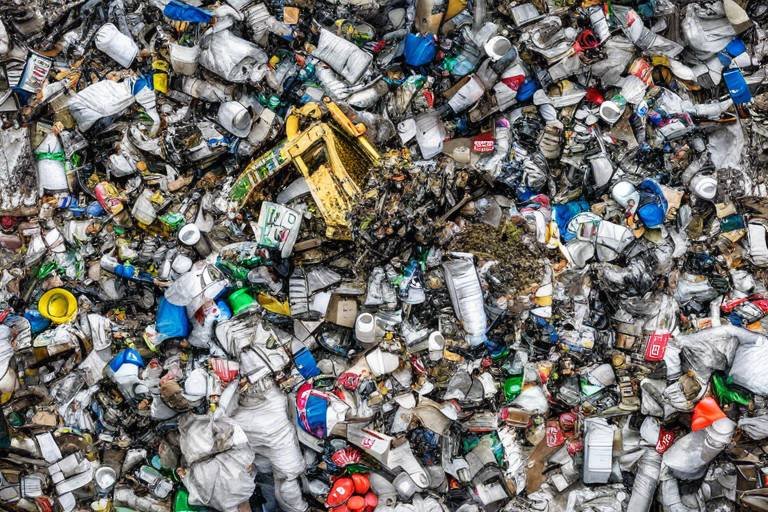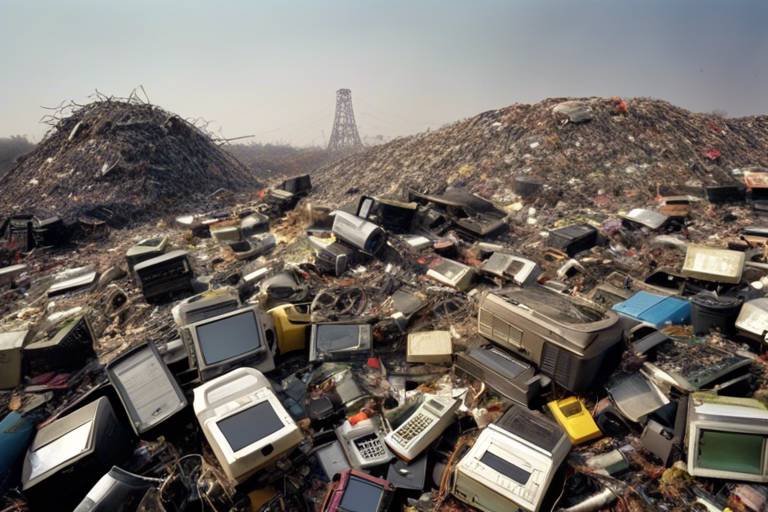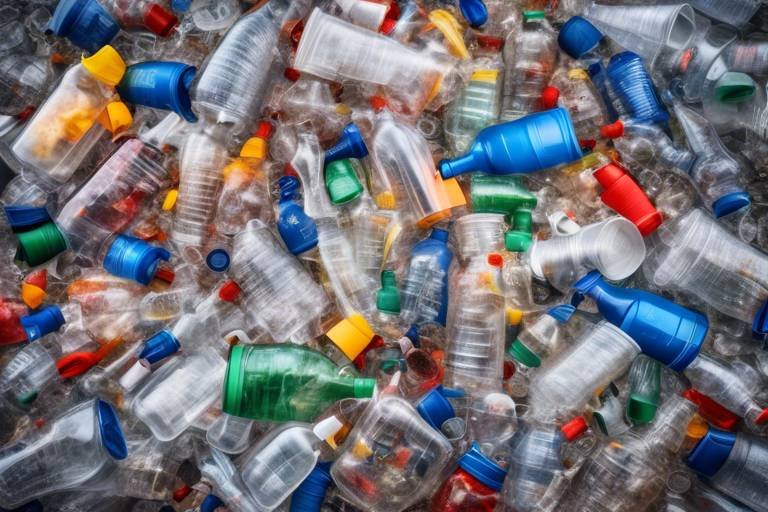How Are Single-Use Plastics Affecting Our Soil Health
In today's world, we are constantly bombarded with the convenience of single-use plastics. From shopping bags to food wrappers, these items have become a staple in our daily lives. However, have you ever stopped to think about the impact they have on our soil health? It's a pressing issue that often flies under the radar, yet it's crucial for our environment and future food security. In this article, we will delve into the detrimental effects of single-use plastics on soil, exploring everything from their degradation process to their impact on vital microorganisms.
Understanding how single-use plastics break down in soil is crucial. When these plastics are discarded, they don’t just vanish; they undergo a slow and often harmful degradation process. Depending on the type of plastic, it can take anywhere from 20 to 1,000 years for these materials to decompose. During this time, they fragment into smaller particles known as microplastics, which can seep into the soil.
These microplastics can release toxic byproducts that negatively impact soil quality and ecosystem health. For instance, chemicals like phthalates and bisphenol A (BPA) can leach into the soil, disrupting the natural balance of nutrients and harming the organisms that call the soil home. This degradation process not only affects the soil but also the plants that rely on it for nutrients and water.
Soil is teeming with life, and at the heart of this ecosystem are microorganisms. These tiny organisms, including bacteria and fungi, play a vital role in nutrient cycling and maintaining soil fertility. However, the introduction of single-use plastics can disrupt this delicate balance. When plastics invade the soil, they can alter the composition of microbial communities, leading to a decline in biodiversity.
The diversity of microorganisms in soil is not just important; it's essential for its health. A rich variety of microbes ensures that soil can perform its functions effectively, such as breaking down organic matter and cycling nutrients. Unfortunately, plastic pollution has been shown to reduce microbial diversity, which can impair these vital functions. Studies have indicated that the presence of plastics can lead to a decrease in microbial biomass, resulting in diminished agricultural productivity and soil fertility.
Beneficial bacteria are the unsung heroes of soil health, playing a key role in processes like nitrogen fixation and organic matter decomposition. However, when single-use plastics infiltrate the soil, they can have a detrimental impact on these organisms. The presence of plastics can alter the soil structure, making it more compact and less aerated. This change can hinder the ability of beneficial bacteria to thrive, ultimately affecting nutrient availability for plants and leading to poorer crop yields.
Fungi are another critical component of soil ecosystems, responsible for breaking down complex organic materials and aiding in nutrient uptake for plants. Unfortunately, plastic pollution can have a detrimental effect on fungal populations. Research shows that fungi may struggle to adapt to the presence of plastics, leading to reduced decomposition rates and nutrient cycling. This can create a cascade of negative effects on soil health, further exacerbating the challenges posed by single-use plastics.
The accumulation of single-use plastics can lead to long-term fertility problems that threaten food security. As soil health declines due to reduced microbial activity and nutrient availability, farmers may find it increasingly challenging to produce healthy crops. This situation can create a vicious cycle: poorer soil health leads to lower yields, which in turn increases the reliance on chemical fertilizers, further harming the soil ecosystem.
Addressing the issue of single-use plastics requires innovative solutions and a collective effort. From biodegradable materials to community initiatives aimed at reducing plastic waste, there are several strategies that can help mitigate these environmental challenges.
Biodegradable plastics offer a promising alternative to traditional plastics. These materials are designed to break down more quickly and are less harmful to the environment. However, it's essential to consider their benefits and limitations in terms of soil health and environmental sustainability. While they may decompose faster than conventional plastics, they still require specific conditions to break down effectively, which may not always be present in natural environments.
Raising awareness about the impact of single-use plastics is vital for driving change. Education initiatives can empower communities to adopt sustainable practices and reduce plastic consumption. By fostering a culture of sustainability, we can encourage individuals and businesses to seek alternatives, ultimately leading to healthier soils and a more sustainable future.
- What are single-use plastics? Single-use plastics are items designed to be used once and then discarded, such as plastic bags, straws, and packaging.
- How long does it take for single-use plastics to decompose? Depending on the type of plastic, it can take anywhere from 20 to 1,000 years for single-use plastics to decompose in the environment.
- Why are microorganisms important for soil health? Microorganisms play a crucial role in nutrient cycling, organic matter decomposition, and maintaining soil structure, all of which are essential for healthy plant growth.
- What can individuals do to reduce plastic waste? Individuals can reduce plastic waste by using reusable bags, avoiding single-use items, and supporting businesses that prioritize sustainable practices.
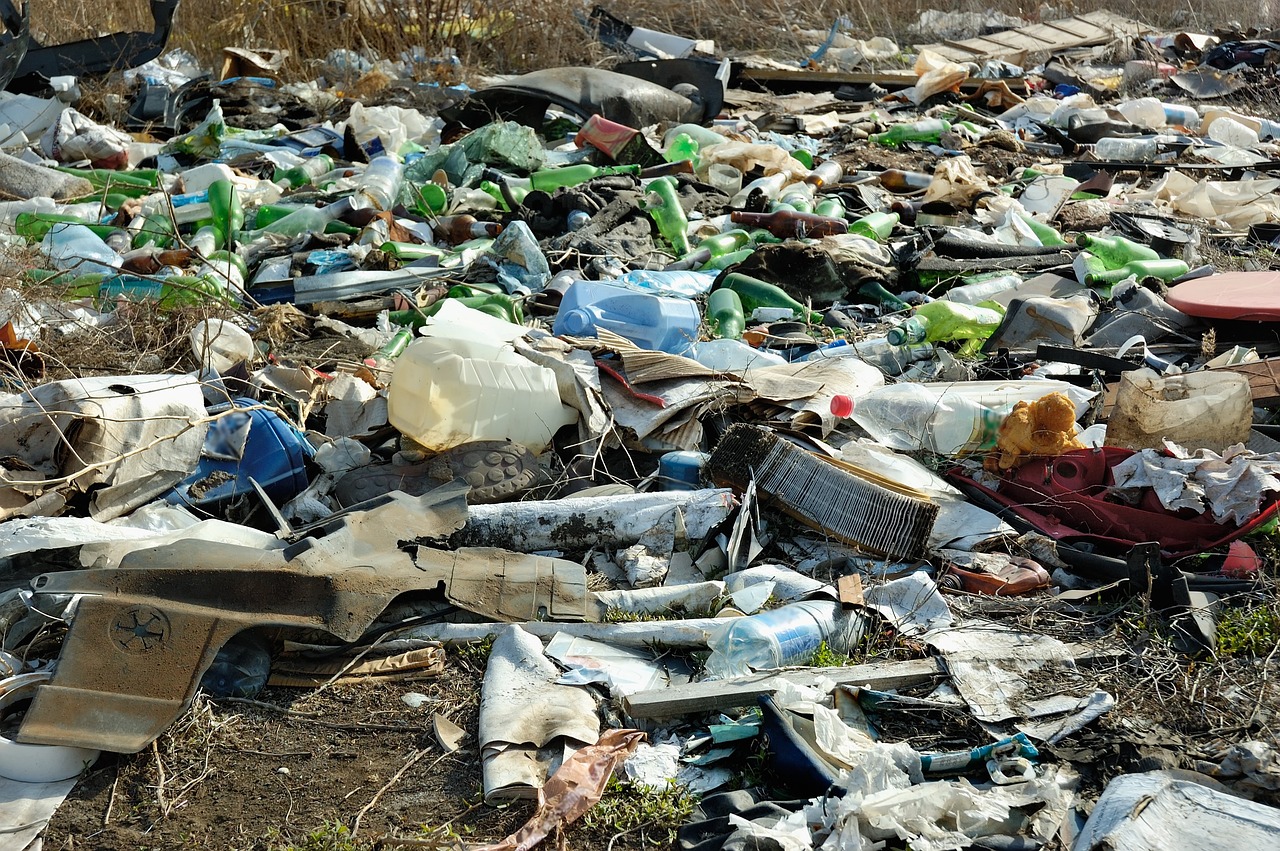
The Degradation of Single-Use Plastics
Understanding how single-use plastics break down in soil is crucial for grasping their impact on our environment. These plastics, which include items like straws, bags, and utensils, are designed for one-time use, but their journey doesn’t end in the trash. Instead, they often find their way into landfills and, eventually, our soil. The degradation process of these materials is alarmingly slow, taking anywhere from 20 to 1,000 years to break down completely, depending on the type of plastic and environmental conditions.
During this extensive degradation period, single-use plastics undergo a transformation that produces harmful byproducts. As they break apart, they can release toxic chemicals, including phthalates and heavy metals, which seep into the soil. This contamination can significantly impair soil quality, affecting its ability to support plant life and maintain healthy ecosystems. The presence of these chemicals can lead to a decrease in soil pH, making it more acidic, which in turn affects nutrient availability for plants.
Moreover, the physical presence of plastic in the soil can create a barrier that prevents water and air from penetrating, essential components for healthy soil. This is akin to putting a plastic sheet over a garden; it suffocates the soil and disrupts the natural processes that sustain it. It’s not just about the visible litter; the invisible consequences are what truly threaten our agricultural systems and biodiversity.
To illustrate the degradation timeline of various types of single-use plastics, consider the following table:
| Type of Plastic | Time to Degrade | Potential Byproducts |
|---|---|---|
| Plastic Bags | 10-1,000 years | Microplastics, toxic chemicals |
| Styrofoam Cups | 500 years | Styrene, a possible carcinogen |
| Plastic Straws | 200 years | Microplastics |
| Plastic Bottles | 450 years | Antimony, a toxic metalloid |
As we can see, the degradation of single-use plastics is not just a passing concern; it’s a long-term challenge that demands our immediate attention. The effects on soil health are profound and far-reaching. With every plastic item that degrades, we risk releasing harmful substances into the ecosystem, which can have a domino effect on the entire food chain. It poses a serious threat not only to plant life but also to the animals and humans that rely on these plants for sustenance.
In summary, the degradation of single-use plastics is a complex process that extends far beyond their initial use. The timeframes involved and the harmful byproducts released into the soil highlight the urgent need for more sustainable practices. As we continue to grapple with this issue, it becomes increasingly clear that we must seek out effective solutions to mitigate the environmental challenges posed by plastic waste.
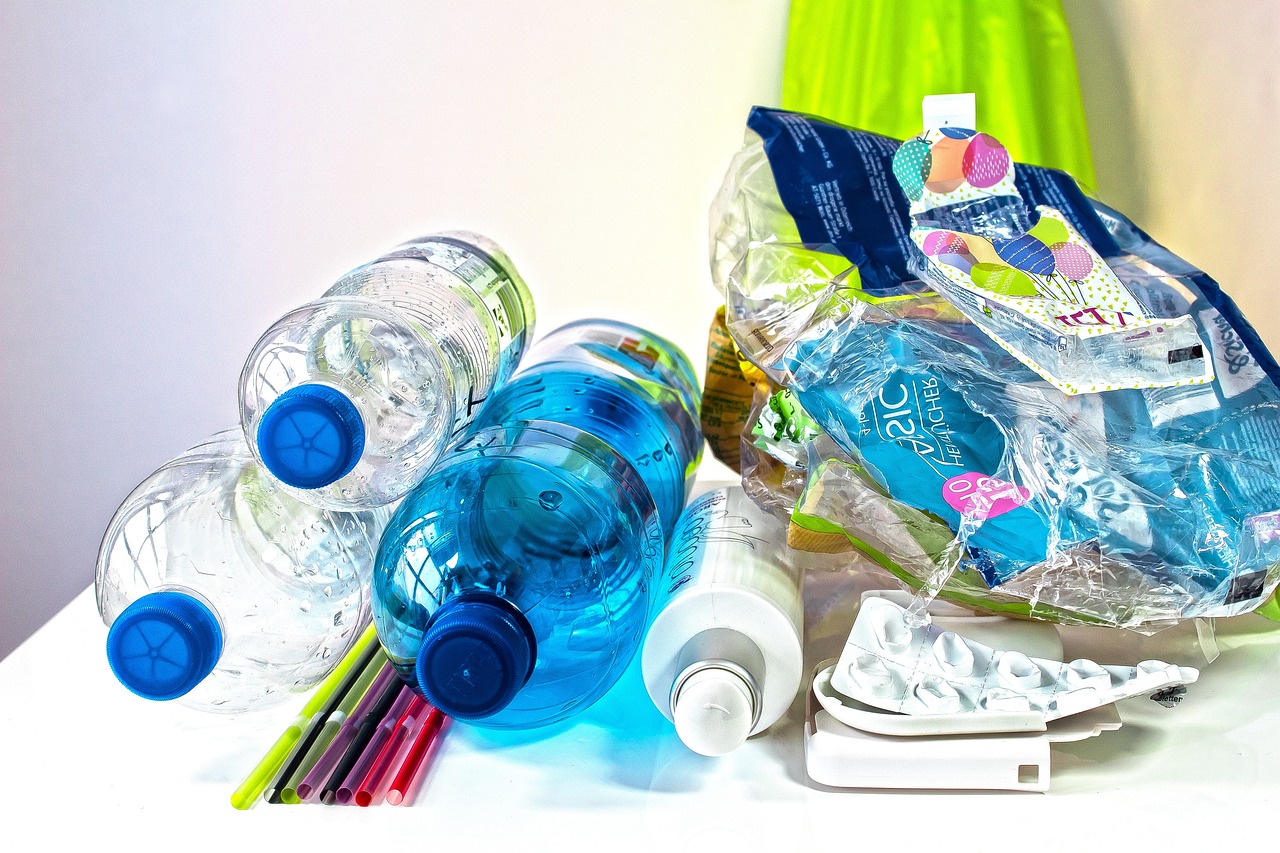
Impact on Soil Microorganisms
The impact of single-use plastics on soil microorganisms is nothing short of alarming. These tiny, yet incredibly vital organisms are the unsung heroes of our soil ecosystems, playing a crucial role in nutrient cycling, soil structure, and plant health. When single-use plastics enter the soil, they disrupt the delicate balance of these microbial communities, leading to a cascade of negative effects that can compromise soil health and agricultural productivity.
To understand this better, let’s consider the composition of soil microbiomes. A healthy soil is like a bustling city, filled with diverse inhabitants working together for the common good. However, when plastic waste invades this city, it’s akin to introducing a toxic pollutant that disrupts the harmony. The presence of plastics can lead to a significant reduction in microbial diversity, which is critical for maintaining soil fertility. When certain species are diminished or eliminated, the entire ecosystem suffers. This decline in diversity not only affects the microorganisms' ability to perform essential functions but also makes the soil more susceptible to diseases and nutrient deficiencies.
Moreover, the degradation of plastics in the soil can produce harmful byproducts, such as microplastics and chemical additives, that can further exacerbate the situation. These substances can be ingested by microorganisms, leading to toxic effects that hinder their growth and function. For instance, beneficial bacteria that help decompose organic matter and fix nitrogen may find it increasingly difficult to thrive in plastic-polluted environments. This disruption can lead to a vicious cycle where nutrient availability decreases, ultimately affecting plant growth and yield.
Let’s take a closer look at some of the key ways that single-use plastics impact soil microorganisms:
- Reduced Microbial Diversity: The introduction of plastics can lead to a decline in the variety of microbial species present in the soil.
- Disruption of Nutrient Cycling: With fewer microorganisms, the processes that recycle nutrients become less efficient, leading to nutrient deficiencies in plants.
- Altered Soil Structure: Healthy microbial communities contribute to soil structure; their decline can lead to compaction and erosion.
- Toxicity from Degradation: Plastics break down into harmful microplastics, which can be harmful to soil organisms.
In summary, the impact of single-use plastics on soil microorganisms is profound and multifaceted. As these plastics infiltrate our soils, they not only disrupt the microbial communities essential for healthy ecosystems but also threaten the very foundation of our food systems. Addressing this issue requires urgent attention and action to safeguard our soil health and, by extension, our agricultural productivity and food security.
Q1: How do single-use plastics reach the soil?
A1: Single-use plastics can reach the soil through improper disposal, littering, and runoff from urban areas where waste is not managed properly.
Q2: What are microplastics, and why are they a concern?
A2: Microplastics are tiny plastic particles that result from the breakdown of larger plastic items. They can be ingested by soil organisms, leading to toxic effects and disruption of soil health.
Q3: What can be done to mitigate the impact of plastics on soil microorganisms?
A3: Solutions include reducing plastic consumption, promoting biodegradable alternatives, and increasing community awareness about the importance of proper waste management.
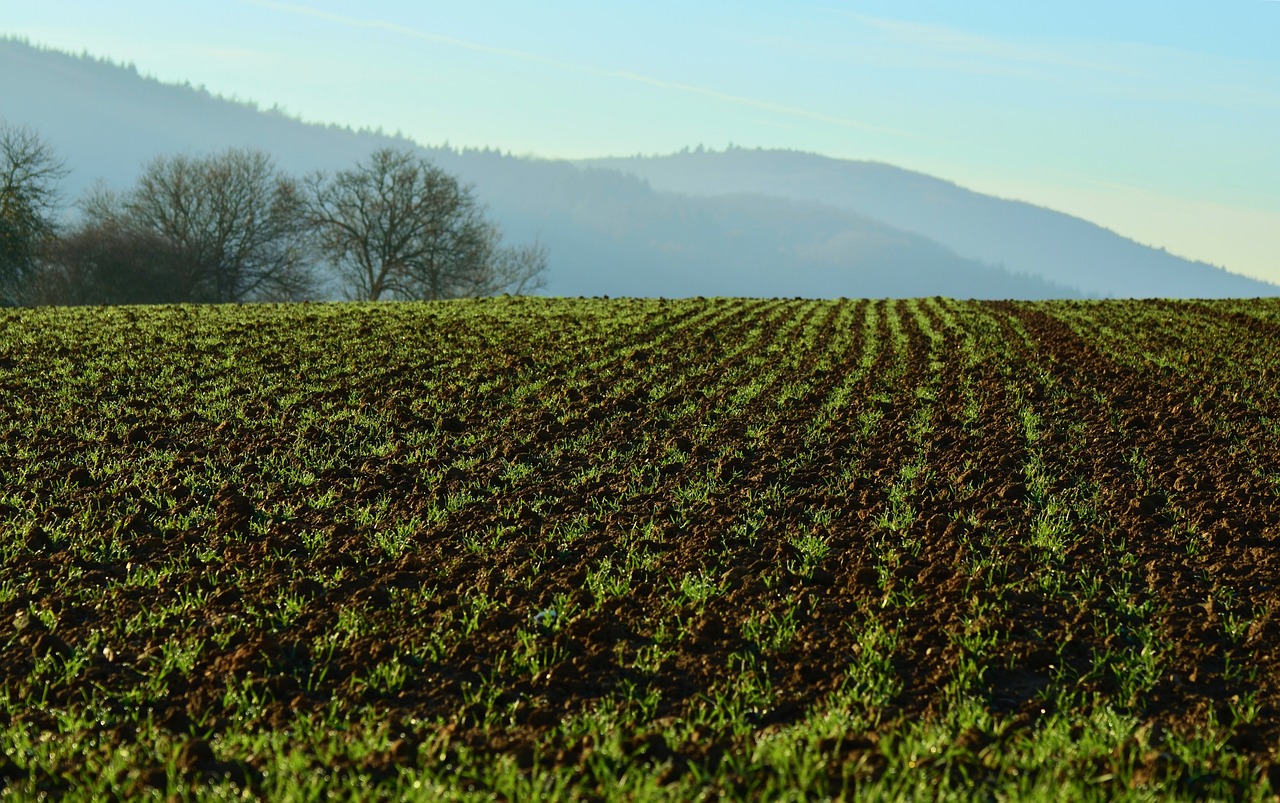
Microbial Diversity and Function
The health of our soil is intricately linked to its microbial diversity. Imagine a bustling city, alive with activity—each organism playing its part in maintaining the ecosystem's balance. When we introduce single-use plastics into this environment, we disrupt the delicate equilibrium that has taken eons to establish. The presence of these plastics creates a hostile environment for many microorganisms, leading to a decline in microbial diversity.
Microorganisms in the soil, including bacteria, fungi, and archaea, are essential for various soil functions. They help decompose organic material, cycle nutrients, and even promote plant growth. However, when plastics degrade, they release harmful byproducts that can be toxic to these vital organisms. This toxicity can lead to a significant reduction in microbial populations, which in turn affects the soil's ability to function optimally.
For instance, beneficial bacteria are crucial for processes such as nitrogen fixation and organic matter decomposition. When their populations dwindle due to plastic pollution, the soil's nutrient cycling capabilities diminish. This can result in poor crop yields and reduced soil fertility over time. The loss of microbial diversity also means that the soil becomes less resilient to environmental changes, such as droughts or floods, which can further exacerbate agricultural challenges.
In addition to bacteria, fungi play a vital role in soil health. They form symbiotic relationships with plant roots, aiding in nutrient uptake and enhancing plant growth. However, studies have shown that the presence of single-use plastics can lead to a decline in fungal diversity as well. This decline not only affects the plants' nutrient access but also disrupts the entire soil food web, leading to an imbalance that can have cascading effects on the ecosystem.
To illustrate the impact of single-use plastics on microbial diversity, consider the following table:
| Microbial Group | Function | Impact of Plastic Pollution |
|---|---|---|
| Bacteria | Nutrient cycling, organic matter decomposition | Reduced populations, impaired nutrient availability |
| Fungi | Decomposition, nutrient uptake | Declining diversity, disrupted plant relationships |
| Archaea | Carbon cycling, methane production | Altered metabolic pathways, reduced efficiency |
In conclusion, the decline in microbial diversity caused by single-use plastics poses a serious threat to soil health and agricultural productivity. Just as a city thrives on the contributions of its citizens, healthy soil relies on a diverse community of microorganisms. When this diversity is compromised, the entire ecosystem suffers, leading to long-term consequences for food security and environmental sustainability.
- What are single-use plastics? Single-use plastics are products designed to be used once and then discarded, such as plastic bags, straws, and food packaging.
- How do single-use plastics affect soil health? They disrupt microbial diversity, release harmful byproducts, and impair nutrient cycling, leading to reduced soil fertility.
- What can be done to mitigate the effects of plastic pollution? Solutions include using biodegradable materials, raising community awareness, and promoting sustainable practices.
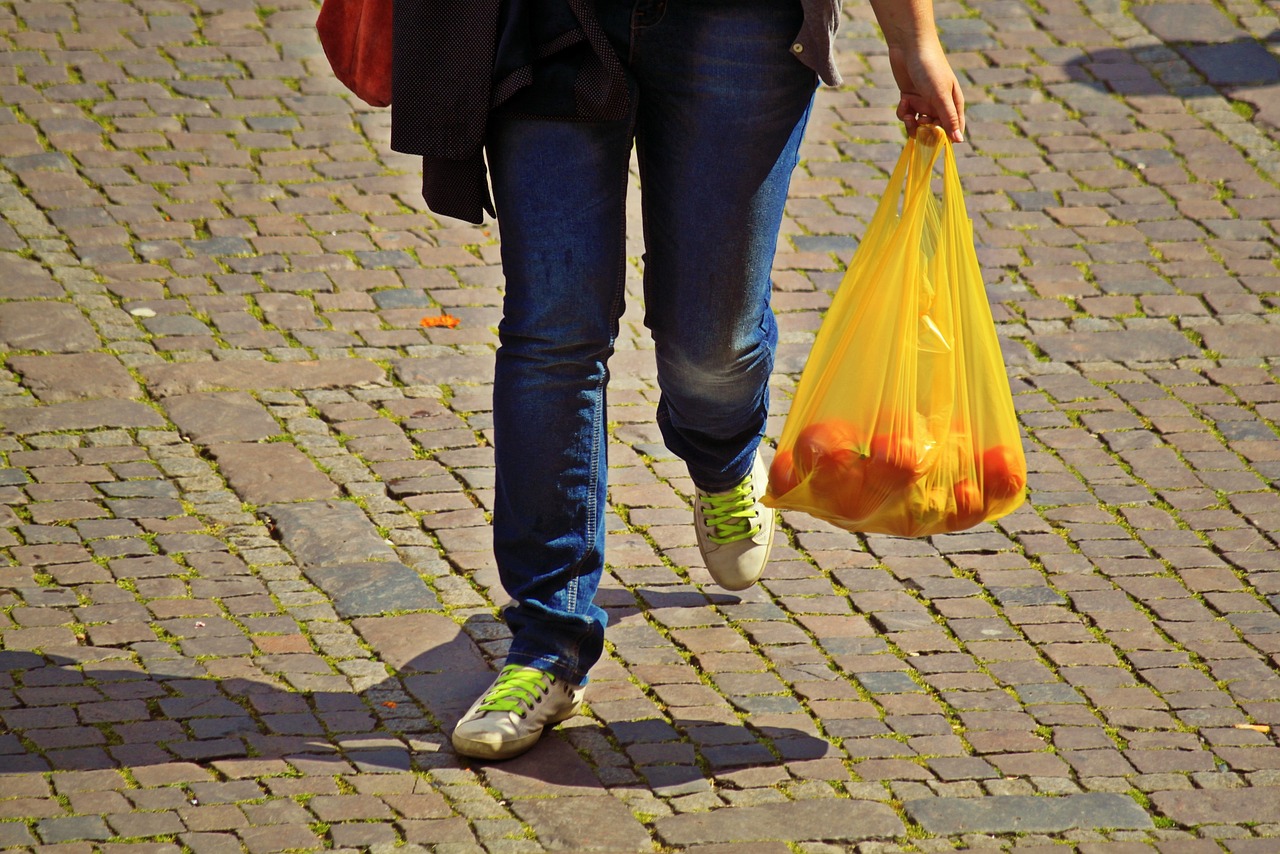
Effects on Beneficial Bacteria
When we think about soil health, we often picture rich, dark earth teeming with life. But did you know that beneficial bacteria play a crucial role in maintaining this vibrant ecosystem? These microscopic heroes help decompose organic matter, fix nitrogen, and promote nutrient availability for plants. However, the introduction of single-use plastics into our soils is creating a ripple effect that can severely disrupt these essential bacterial communities.
Single-use plastics, such as plastic bags, straws, and packaging, can take hundreds of years to decompose. During this time, they break down into smaller particles known as microplastics, which can infiltrate the soil. This infiltration can lead to a range of negative consequences for beneficial bacteria. For instance, the presence of microplastics in the soil can alter its physical and chemical properties, making it less hospitable for these important microorganisms.
One of the primary effects of plastic pollution on beneficial bacteria is the disruption of their natural habitats. These bacteria thrive in specific conditions that support their growth and function. However, the introduction of plastic can lead to changes in soil structure, compaction, and reduced porosity, which in turn limits the movement of air and water through the soil. Consequently, beneficial bacteria struggle to survive and reproduce, leading to a decline in their populations.
Furthermore, when beneficial bacteria are exposed to plastics, they may also experience toxicity from chemical additives found in these materials. Many plastics contain harmful substances such as phthalates and bisphenol A (BPA), which can leach into the soil and create a hostile environment for beneficial bacteria. This toxicity can impair their metabolic functions, reducing their ability to perform vital processes such as nutrient cycling and organic matter decomposition.
The reduction of beneficial bacteria due to plastic pollution can have far-reaching implications for soil health and agricultural productivity. With fewer beneficial bacteria present, the soil's ability to retain nutrients diminishes, leading to lower crop yields and diminished soil fertility. In fact, studies have shown that soils contaminated with plastics exhibit significantly lower levels of essential nutrients, which can severely impact plant growth and food security.
In summary, the effects of single-use plastics on beneficial bacteria are profound and multifaceted. As these plastics continue to accumulate in our soils, they disrupt the delicate balance of microbial communities, leading to a decline in soil health and agricultural productivity. It is crucial that we recognize the importance of these microorganisms and take action to mitigate the impact of plastic pollution on our soil ecosystems.

Soil Fungi and Plastic Pollution
Soil fungi are the unsung heroes of our ecosystems, playing a crucial role in decomposition and nutrient uptake. These remarkable organisms help break down organic matter, allowing essential nutrients to be recycled back into the soil. However, the introduction of single-use plastics into the environment poses a significant threat to these vital fungi. When plastics degrade, they release harmful chemicals and microplastics that can alter the soil composition, creating an inhospitable environment for fungi to thrive.
Research shows that plastic pollution can lead to a decline in fungal diversity. This decline is alarming because a diverse fungal community is essential for maintaining soil health. Different species of fungi perform various functions; some are excellent decomposers, while others form symbiotic relationships with plant roots, enhancing nutrient absorption. When single-use plastics disrupt these communities, the consequences can ripple through the entire ecosystem, affecting everything from plant health to animal life.
Moreover, the presence of plastics in soil can hinder the growth of beneficial fungi. For instance, mycorrhizal fungi, which form partnerships with plant roots, are essential for nutrient exchange and water retention. When these fungi are affected by plastic pollution, plants may struggle to access the nutrients they need, leading to weaker growth and reduced crop yields. This scenario raises a critical question: how can we expect to maintain healthy soils and sustainable agriculture if we continue to allow plastic pollution to infiltrate our ecosystems?
To put this into perspective, consider the following impacts of plastic pollution on soil fungi:
- Reduced Fungal Diversity: A decline in the variety of fungal species can impair essential soil functions.
- Impaired Nutrient Cycling: Fungi play a significant role in breaking down organic matter; plastics hinder this process.
- Disrupted Symbiotic Relationships: Beneficial fungi that assist in plant nutrient uptake are negatively affected, leading to poorer plant health.
In conclusion, the relationship between soil fungi and plastic pollution is a complex one, but it is clear that the presence of single-use plastics poses a serious threat to these essential organisms. As we strive for healthier soils and sustainable agricultural practices, addressing the issue of plastic pollution must be a top priority. Only then can we ensure that our ecosystems remain resilient and capable of supporting life.
Q: How does plastic pollution affect soil fungi?
A: Plastic pollution can reduce fungal diversity, impair nutrient cycling, and disrupt beneficial symbiotic relationships between fungi and plants, all of which negatively impact soil health.
Q: What are the long-term effects of reduced fungal diversity in soil?
A: Reduced fungal diversity can lead to impaired soil functions, decreased agricultural productivity, and long-term fertility issues, ultimately affecting food security.
Q: Are there any solutions to mitigate the impact of plastic pollution on soil fungi?
A: Solutions include reducing single-use plastic consumption, promoting biodegradable alternatives, and raising awareness about the importance of soil health and sustainable practices.

Long-term Soil Fertility Issues
The accumulation of single-use plastics in our soils poses a significant threat to long-term soil fertility. As these plastics degrade, they release toxic byproducts that can alter the chemical composition of the soil. This alteration can lead to a decrease in essential nutrients, which are vital for plant growth. Imagine trying to grow a garden in a soil that has been stripped of its nutrients; it would be like trying to cook a gourmet meal with only salt and water. Not only does this impact the immediate health of the soil, but it also creates a ripple effect that can last for generations.
Research indicates that the presence of plastics can hinder the soil's natural processes, such as nutrient cycling and organic matter decomposition. Over time, this can lead to a decline in soil structure and fertility. The soil becomes compacted and less aerated, making it difficult for roots to penetrate and access the nutrients they need. The result? Poor crop yields and diminished agricultural productivity. In fact, studies have shown that fields contaminated with plastic waste can experience yield reductions of up to 30%!
Furthermore, the long-term presence of plastics can create a toxic environment for both plants and beneficial soil organisms. For instance, certain chemicals released from degrading plastics can be detrimental to earthworms and other organisms integral to maintaining soil health. The loss of these organisms means the soil loses its ability to self-regulate and maintain fertility. In essence, we are not just damaging the soil; we are setting the stage for a future where farming becomes increasingly difficult and less sustainable.
To illustrate the extent of this issue, consider the following table that summarizes the effects of single-use plastics on soil fertility:
| Effect | Description |
|---|---|
| Reduced Nutrient Availability | Plastics release toxic byproducts that bind essential nutrients, making them unavailable to plants. |
| Soil Compaction | Plastic accumulation leads to soil compaction, reducing aeration and root penetration. |
| Decline in Soil Organisms | Beneficial organisms like earthworms are harmed, disrupting the natural ecosystem. |
| Impaired Water Retention | Plastic pollution can alter the soil's ability to retain water, leading to drought conditions. |
In conclusion, the long-term implications of single-use plastics on soil fertility are alarming. As we continue to use these materials without considering their environmental impact, we jeopardize not only our current agricultural practices but also the ability of future generations to cultivate healthy, productive land. It's crucial that we recognize the gravity of this issue and take steps to mitigate it before it's too late.
- What are single-use plastics? Single-use plastics are items designed to be used once and then discarded, such as plastic bags, straws, and cutlery.
- How do single-use plastics affect soil health? They can release toxic chemicals, reduce nutrient availability, and harm beneficial soil organisms, leading to long-term fertility issues.
- Are there alternatives to single-use plastics? Yes, biodegradable materials and reusable options can significantly reduce plastic waste and its impact on the environment.
- What can I do to help reduce plastic pollution? You can reduce your plastic consumption by opting for reusable products, participating in clean-up initiatives, and educating others about the importance of sustainable practices.

Potential Solutions and Alternatives
Addressing the challenge of single-use plastics is not just a task for scientists and policymakers; it's a collective responsibility that involves everyone. The first step towards mitigating the impact of these plastics on our soil health is to embrace innovative solutions that can replace traditional materials. One of the most promising alternatives is the development of biodegradable plastics. Unlike their conventional counterparts, biodegradable plastics are designed to break down more quickly when exposed to environmental factors such as moisture and microbial activity. This means they have a significantly reduced lifespan in the environment, which can help alleviate some of the pressure on our soil ecosystems.
However, while biodegradable plastics present a potential solution, they are not without limitations. For instance, they often require specific conditions to decompose effectively, which are not always present in natural environments. This raises the question: are we trading one problem for another? To fully capitalize on the benefits of biodegradable options, it’s crucial to educate consumers and manufacturers alike about proper disposal methods and the conditions needed for these materials to break down.
Another vital component in the fight against single-use plastics is community awareness and education. Initiatives aimed at raising awareness about the detrimental effects of plastic pollution can empower individuals and communities to make informed choices. For example, local workshops and educational campaigns can provide insights on how to reduce plastic consumption, promote recycling, and explore alternatives. By fostering a culture of sustainability, we can inspire action at the grassroots level. Imagine a community where everyone is committed to reducing their plastic footprint—what a powerful change that could create!
To help visualize the impact of community initiatives, consider the following table that outlines potential actions and their expected outcomes:
| Action | Expected Outcome |
|---|---|
| Organizing clean-up drives | Reduction of plastic waste in local environments |
| Implementing recycling programs | Increased recycling rates and reduced landfill waste |
| Promoting zero-waste lifestyles | Decreased reliance on single-use plastics |
| Educational workshops on sustainable practices | Informed community members making better choices |
Ultimately, the key to tackling the single-use plastic crisis lies in a multifaceted approach that combines innovation with education. By supporting the development of biodegradable materials, raising community awareness, and encouraging sustainable practices, we can create a healthier environment for our soil and future generations. Let’s not wait for change to happen—let’s be the change!
Q1: What are single-use plastics?
A1: Single-use plastics are items designed to be used once and then discarded, such as plastic bags, straws, and food containers. They contribute significantly to environmental pollution.
Q2: How do single-use plastics affect soil health?
A2: Single-use plastics can take hundreds of years to degrade, releasing harmful chemicals into the soil and disrupting microbial communities essential for nutrient cycling and soil fertility.
Q3: What are biodegradable plastics?
A3: Biodegradable plastics are designed to break down more quickly than traditional plastics. However, they still require specific conditions for effective decomposition.
Q4: How can I reduce my use of single-use plastics?
A4: You can reduce your plastic use by opting for reusable bags, containers, and straws, supporting businesses that prioritize sustainable practices, and participating in local recycling programs.

Biodegradable Plastics
When it comes to tackling the growing problem of plastic pollution, have emerged as a beacon of hope. Unlike traditional plastics, which can take hundreds of years to decompose, biodegradable plastics are designed to break down more quickly and safely in the environment. But what does this mean for our soil health? Let’s dive deeper into the advantages and challenges associated with these materials.
Biodegradable plastics are typically made from natural materials, such as corn starch, which can decompose through the action of microorganisms. This process can significantly reduce the volume of waste that ends up in landfills and, ultimately, our soil. However, it's important to note that not all biodegradable plastics are created equal. Some are designed to break down in industrial composting facilities, while others may degrade in home composting environments. This variability can lead to confusion and mismanagement, which is crucial to address to maximize their benefits.
Here are some key points to consider about biodegradable plastics:
- Decomposition Time: Biodegradable plastics can decompose in a matter of months to a few years, depending on the environment and conditions.
- Microbial Activity: They encourage microbial activity in the soil, which can enhance nutrient cycling and improve soil structure.
- Soil Health: When they break down, they can contribute to soil organic matter, potentially enhancing soil fertility.
However, despite their potential, biodegradable plastics also come with limitations. For instance, if they end up in environments lacking the necessary conditions for decomposition—like a landfill—they can behave similarly to conventional plastics. Furthermore, some biodegradable plastics release harmful byproducts during their breakdown, which can negatively impact soil health. Therefore, it's crucial to ensure that these materials are disposed of correctly and in suitable environments to truly reap their benefits.
In conclusion, while biodegradable plastics present a promising alternative to traditional plastics, their effectiveness in improving soil health hinges on proper usage and disposal. As we continue to innovate and seek sustainable solutions, understanding the nuances of biodegradable materials will be vital in our quest to protect our precious soil ecosystems.
Q1: What are biodegradable plastics made from?
A1: Biodegradable plastics are typically made from natural materials such as corn starch, potato starch, or other plant-based resources.
Q2: How long do biodegradable plastics take to decompose?
A2: The decomposition time can vary widely, ranging from a few months to several years, depending on the type of biodegradable plastic and environmental conditions.
Q3: Can biodegradable plastics be recycled?
A3: Most biodegradable plastics cannot be recycled with traditional plastics. They often require specific composting conditions to break down effectively.
Q4: Are biodegradable plastics better for the environment?
A4: While they can reduce plastic waste and contribute positively to soil health when disposed of properly, they are not a complete solution and should be used alongside other waste reduction strategies.
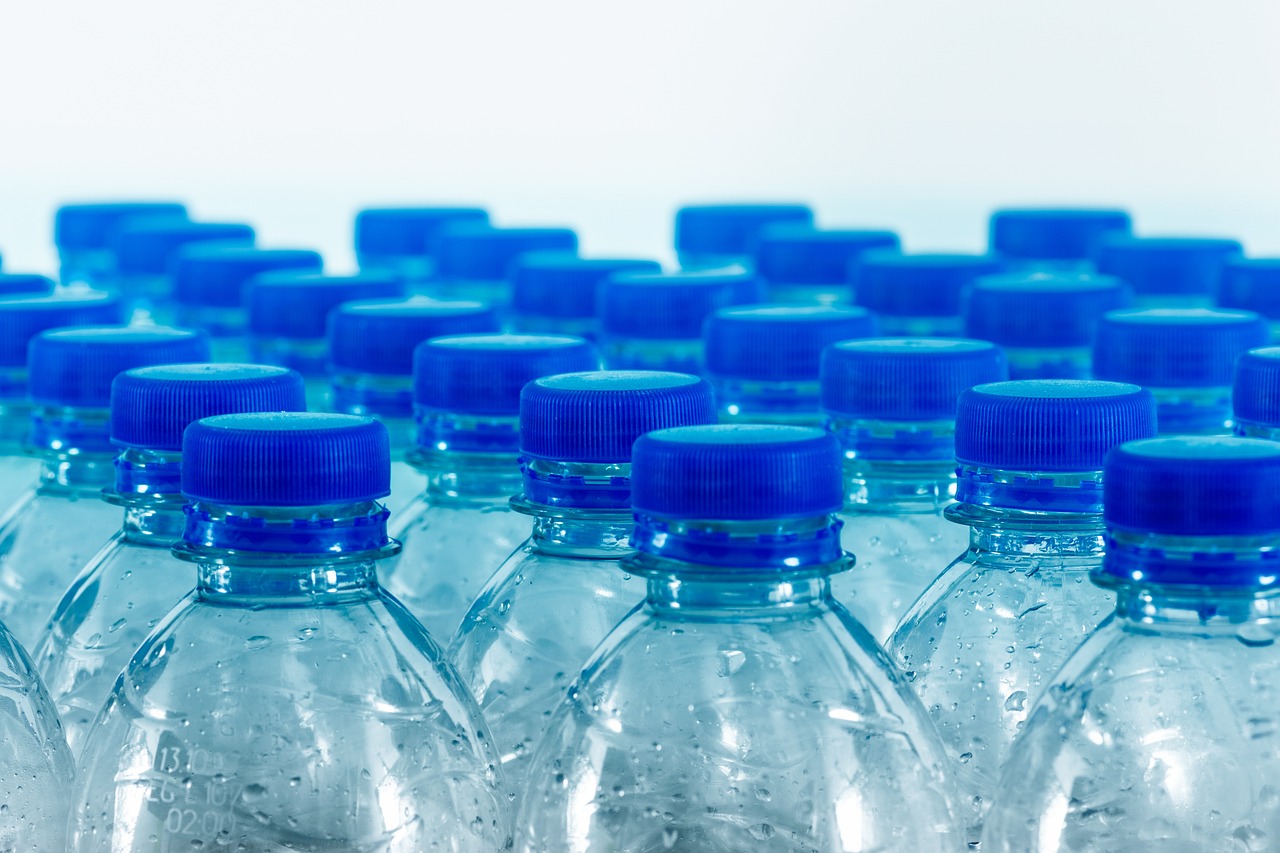
Community Awareness and Education
Raising awareness about the impact of single-use plastics is not just a responsibility; it's a necessity for the health of our planet and future generations. When communities come together to educate themselves and others about the detrimental effects of plastic pollution, they can foster a culture of sustainability. Imagine a world where every individual understands that their choices can either contribute to the problem or be part of the solution. It's empowering, isn't it?
Education initiatives play a critical role in this transformation. Schools, local organizations, and community groups can collaborate to create programs that inform people about the consequences of single-use plastics on soil health and the broader environment. Workshops, seminars, and community events can serve as platforms for sharing knowledge and inspiring action. For instance, consider a community workshop where families learn how to reduce plastic use at home. They could engage in hands-on activities like crafting reusable bags or exploring alternative materials. This not only raises awareness but also fosters a sense of community and shared responsibility.
Moreover, social media can be a powerful tool in spreading awareness. Platforms like Instagram, Facebook, and Twitter allow for quick dissemination of information and can reach a vast audience. By sharing compelling visuals and facts about the impact of single-use plastics, communities can spark conversations and motivate individuals to take action. A simple post can lead to a ripple effect, encouraging others to join the movement.
To further enhance community engagement, local governments can play a significant role by implementing educational campaigns. These campaigns can highlight the importance of reducing plastic consumption and promote initiatives such as recycling programs and clean-up drives. For example, a local government might partner with schools to host a "Plastic-Free Day," where students and community members are encouraged to avoid single-use plastics for a day and share their experiences online. This kind of initiative not only raises awareness but also encourages behavioral change.
Ultimately, the goal is to create a shift in mindset. When communities are informed and engaged, they can advocate for policies that support sustainable practices. This may include pushing for local bans on single-use plastics or promoting the use of biodegradable alternatives. By educating ourselves and those around us, we can build a healthier environment for our soil, our food, and ourselves. The journey may seem daunting, but every small step counts. Together, we can cultivate a culture of awareness and action that leads to lasting change.
- What are single-use plastics? Single-use plastics are items designed to be used once and then discarded, such as plastic bags, straws, and utensils.
- How do single-use plastics affect soil health? They can break down into microplastics, disrupting the balance of soil microorganisms and affecting nutrient cycling.
- What can communities do to reduce single-use plastic usage? Communities can organize educational workshops, promote recycling programs, and advocate for policies that limit plastic use.
- Are there alternatives to single-use plastics? Yes, biodegradable materials, reusable bags, and containers are effective alternatives that can help reduce plastic waste.
Frequently Asked Questions
-
What are single-use plastics?
Single-use plastics are items designed to be used once and then discarded. Think of plastic bags, straws, and cutlery that we often use for a quick meal or a shopping trip. They’re convenient but come with a hefty price tag for our environment!
-
How do single-use plastics degrade in soil?
Single-use plastics can take hundreds of years to break down in soil. When they do, they often fragment into smaller pieces known as microplastics, which can release harmful chemicals into the soil, affecting its quality and the health of surrounding ecosystems.
-
What impact do single-use plastics have on soil microorganisms?
These plastics disrupt the balance of soil microorganisms, which are crucial for nutrient cycling and soil fertility. When the diversity of these microbial communities is compromised, it can lead to serious issues for the overall health of the soil.
-
Why is microbial diversity important for soil health?
Microbial diversity is like a bustling city of life in the soil. Each microorganism plays a unique role, from decomposing organic matter to aiding plant growth. When this diversity is reduced due to plastic pollution, it can lead to diminished soil functions and lower agricultural productivity.
-
How do single-use plastics affect beneficial bacteria?
Beneficial bacteria are key players in maintaining soil structure and nutrient availability. Unfortunately, single-use plastics can harm these organisms, leading to poorer soil health and potentially affecting crop yields.
-
What role do fungi play in soil ecosystems?
Fungi are essential for breaking down organic materials and aiding nutrient uptake in plants. However, plastic pollution can negatively impact fungal populations, disrupting these vital processes and threatening soil health.
-
What long-term issues can arise from plastic accumulation in soil?
Over time, the accumulation of single-use plastics can lead to significant fertility issues in soil. This can result in reduced crop yields and food security challenges, making it crucial to address plastic pollution.
-
What are some potential solutions to reduce the impact of single-use plastics?
Innovative solutions include the use of biodegradable plastics, which break down more quickly than traditional plastics, and community initiatives that promote awareness and sustainable practices to reduce plastic consumption.
-
Are biodegradable plastics a good alternative?
Biodegradable plastics can be a promising alternative, but they also have limitations. While they break down faster than traditional plastics, they still require specific conditions to decompose effectively, and their impact on soil health needs further study.
-
How can community awareness help address plastic pollution?
Raising awareness is vital! Educational initiatives can empower individuals and communities to adopt sustainable practices, ultimately reducing plastic consumption and its detrimental effects on soil health.

